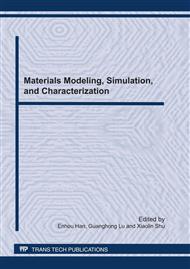p.419
p.425
p.432
p.440
p.445
p.450
p.455
p.461
p.468
Study on Fluorocarbon Antifouling Coatings with Low Surface Energy
Abstract:
To develop non-toxic marine antifouling coating, a series of antifouling coatings were prepared based on fluorocarbon copolymer. Based on the measurement of roughness and water contact angle, the attachment test of marine diatom and bacteria before and after dynamic testing in seawater, it has been investigated that the influence of three functional fillings and silicone resin on the performance of the antifouling coatings with low surface energy. The erosion rate of the coatings was measured by the samples rotated 72h at the 12 knots of simulating sailing speed. The results showed that the roughness of coatings changes from 0.2um to 3um, it does influenced slightly by the rotating test. Water contact angle of all coatings is about 100° before rotating test. It decreases to about 70° after the rotating test in seawater. Due to the increase of surface energy of the coatings, both the amount of diatom and bacteria on samples increases after rotating test in seawater.
Info:
Periodical:
Pages:
445-449
Citation:
Online since:
June 2011
Authors:
Price:
Сopyright:
© 2011 Trans Tech Publications Ltd. All Rights Reserved
Share:
Citation:


